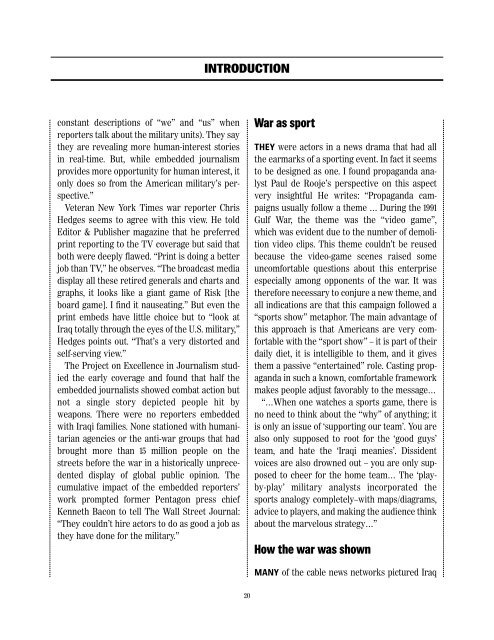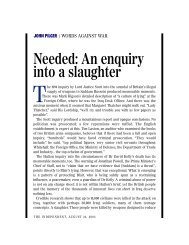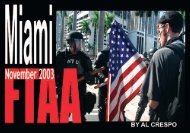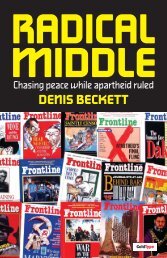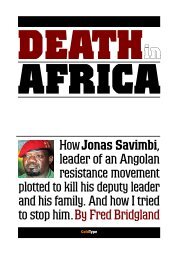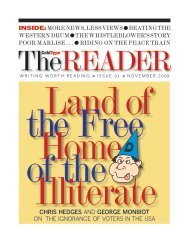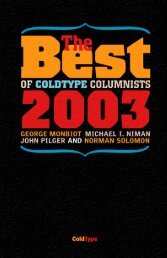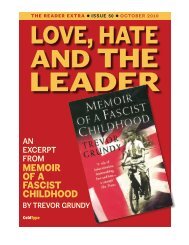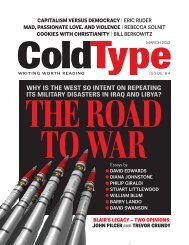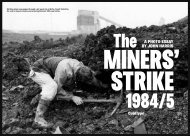UPDATED - ColdType
UPDATED - ColdType
UPDATED - ColdType
- TAGS
- updated
- coldtype
- coldtype.net
You also want an ePaper? Increase the reach of your titles
YUMPU automatically turns print PDFs into web optimized ePapers that Google loves.
constant descriptions of “we” and “us” when<br />
reporters talk about the military units). They say<br />
they are revealing more human-interest stories<br />
in real-time. But, while embedded journalism<br />
provides more opportunity for human interest, it<br />
only does so from the American military’s perspective.”<br />
Veteran New York Times war reporter Chris<br />
Hedges seems to agree with this view. He told<br />
Editor & Publisher magazine that he preferred<br />
print reporting to the TV coverage but said that<br />
both were deeply flawed. “Print is doing a better<br />
job than TV,” he observes. “The broadcast media<br />
display all these retired generals and charts and<br />
graphs, it looks like a giant game of Risk [the<br />
board game]. I find it nauseating.” But even the<br />
print embeds have little choice but to “look at<br />
Iraq totally through the eyes of the U.S. military,”<br />
Hedges points out. “That’s a very distorted and<br />
self-serving view.”<br />
The Project on Excellence in Journalism studied<br />
the early coverage and found that half the<br />
embedded journalists showed combat action but<br />
not a single story depicted people hit by<br />
weapons. There were no reporters embedded<br />
with Iraqi families. None stationed with humanitarian<br />
agencies or the anti-war groups that had<br />
brought more than 15 million people on the<br />
streets before the war in a historically unprecedented<br />
display of global public opinion. The<br />
cumulative impact of the embedded reporters’<br />
work prompted former Pentagon press chief<br />
Kenneth Bacon to tell The Wall Street Journal:<br />
“They couldn’t hire actors to do as good a job as<br />
they have done for the military.”<br />
INTRODUCTION<br />
20<br />
War as sport<br />
THEY were actors in a news drama that had all<br />
the earmarks of a sporting event. In fact it seems<br />
to be designed as one. I found propaganda analyst<br />
Paul de Rooje’s perspective on this aspect<br />
very insightful He writes: “Propaganda campaigns<br />
usually follow a theme … During the 1991<br />
Gulf War, the theme was the “video game”,<br />
which was evident due to the number of demolition<br />
video clips. This theme couldn’t be reused<br />
because the video-game scenes raised some<br />
uncomfortable questions about this enterprise<br />
especially among opponents of the war. It was<br />
therefore necessary to conjure a new theme, and<br />
all indications are that this campaign followed a<br />
“sports show” metaphor. The main advantage of<br />
this approach is that Americans are very comfortable<br />
with the “sport show” – it is part of their<br />
daily diet, it is intelligible to them, and it gives<br />
them a passive “entertained” role. Casting propaganda<br />
in such a known, comfortable framework<br />
makes people adjust favorably to the message…<br />
“…When one watches a sports game, there is<br />
no need to think about the “why” of anything; it<br />
is only an issue of ‘supporting our team’. You are<br />
also only supposed to root for the ‘good guys’<br />
team, and hate the ‘Iraqi meanies’. Dissident<br />
voices are also drowned out – you are only supposed<br />
to cheer for the home team… The ‘playby-play’<br />
military analysts incorporated the<br />
sports analogy completely–with maps/diagrams,<br />
advice to players, and making the audience think<br />
about the marvelous strategy…”<br />
How the war was shown<br />
MANY of the cable news networks pictured Iraq


